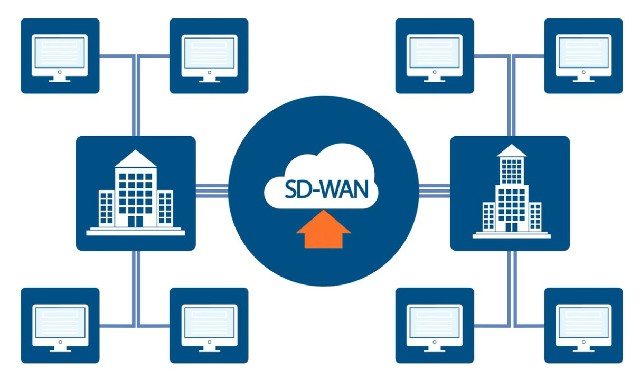Global IT supply chain
International transportation + IT O&M outsourcing + self-owned backbone network
In today’s increasingly complex enterprise networking environment, MPLS (Multi-Protocol Label Switching) has emerged as the preferred choice for multi-branch interconnection, cross-country networking, and other scenarios due to its stability, efficiency, and security. However, the high construction cost of MPLS has prompted many enterprises to explore more economical alternatives. Given this demand, what viable options do we have?

Among various alternatives, SD-WAN (Software-Defined Wide Area Network) has gradually gained prominence with its unique advantages. As an emerging network architecture, SD-WAN leverages intelligent routing and centralized control to provide enterprises with a more flexible and efficient networking experience. Its primary advantages are evident in the following aspects:
Firstly, SD-WAN offers excellent cost-effectiveness. It leverages internet connections extensively, significantly reducing network costs compared to MPLS’s dedicated connections. Secondly, the flexibility of SD-WAN is remarkable. Based on a cloud-native design, SD-WAN enables rapid configuration and reconfiguration of networks and services, meeting the dynamically changing business needs of enterprises. Additionally, it supports multiple transmission protocols and access methods, fulfilling networking requirements across different application scenarios.
Moreover, SD-WAN excels in simplifying network management. It provides a centralized management interface, making network configuration, management, and optimization simpler and more efficient. This significantly reduces the complexity of deploying and managing networks for branches, enhancing overall operational efficiency.
Of course, security is also a noteworthy advantage of SD-WAN. With built-in security features such as encryption and firewalls, SD-WAN provides enterprises with stronger data protection capabilities. Simultaneously, centralized security policy management ensures consistency across the entire network.
Now, can SD-WAN fully replace MPLS? In reality, SD-WAN and MPLS are not complete substitutes but rather complementary technologies. In practical applications, these two technologies often coexist in the same network environment, with the most suitable technology chosen for deployment based on business needs and network environments.
For example, MPLS may be more suitable for delay-sensitive business-critical applications like voice or video conferencing, as it provides more stable performance and lower latency. However, for applications with high bandwidth requirements but less stringent latency demands, such as data backup or large file transfers, SD-WAN can leverage its cost advantage and flexibility to choose a more economical internet connection for data transmission.
Furthermore, SD-WAN can directly connect to cloud services or SaaS applications, avoiding backhaul through enterprise data centers, thus improving performance and reducing latency. This makes SD-WAN increasingly important in cloud and digital transformations.
In conclusion, SD-WAN boasts significant advantages in cost-effectiveness, flexibility, and network management. In practical applications, we need to select the most suitable network technology and connection type based on the nature of the application, requirements, and the actual network environment. For enterprises that cannot afford the high cost of MPLS or aim to reduce costs, SD-WAN is a viable alternative. For more information on networking solutions, please consult network service provider Ogcloud at any time!

International transportation + IT O&M outsourcing + self-owned backbone network

Cellular chips + overseas GPS + global acceleration network

Overseas server room nodes + dedicated lines + global acceleration network

Global acceleration network + self-developed patented technology + easy linking

Global Acceleration Network + Global Multi-Node + Cloud Network Integration


